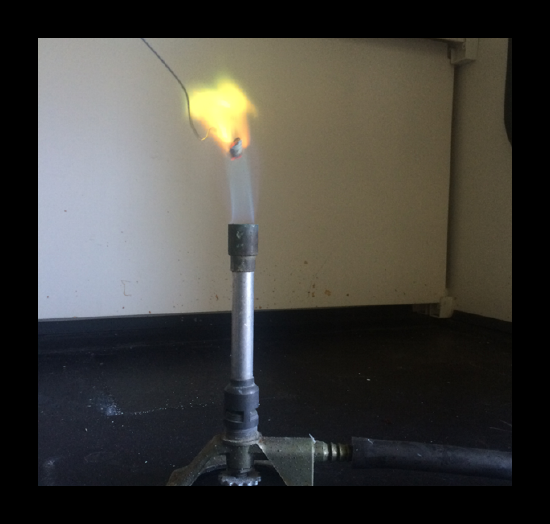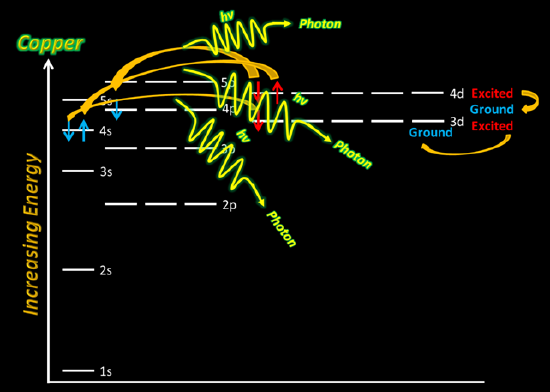Flame Colors
- Page ID
- 221947
Chemical Concepts Demonstrated
- Atomic emission spectra
- Bohr atomic model
Demonstration
| Different types of powdered metals and salts are sprinkled over a flame. | .gif?revision=1&size=bestfit&width=77&height=114) |
Observations
The video shows the metals and salts in this order:
| Metal or salt: 1. Copper acetate 2. Copper 3. Potassium iodide 4. Magnesium 5. Iron 6. Lithium carbonate 7. Strontium nitrate 8. Sodium chloride | Observations: Green flame Violet flame Blue flame Yellow flame |
Explanation
When a metal or metal salt is added to a flame, a combustion reaction ensues. This reaction excites an electron in the metal from its ground state to a higher orbital. In order to return to its ground state, the electron releases the additional energy in the form of light.
Different metal electrons emit different wavelengths of light to return to their respective ground states, so the flame colors are varied. These flames can be used to produce atomic emmision spectra of the elements combusted. Using known values of emmision spectra, one can perform a flame test on un unknown substance, gather an emmision spectrum from it, and determine which elements are in the unknown substance.
For example, in the case of copper ion, there are multiple different "paths" that the excited electrons can follow to emit photon of certain discrete energy. This produces multiple spectra lines because each discrete energy level difference will yield a specific wavelength of light, which determines the color.
Figure 1 (left): Copper is heated and as the electrons fall back, certain color of light is emitted. (right): Submicroscopic view of the electron movement, as electrons fall



